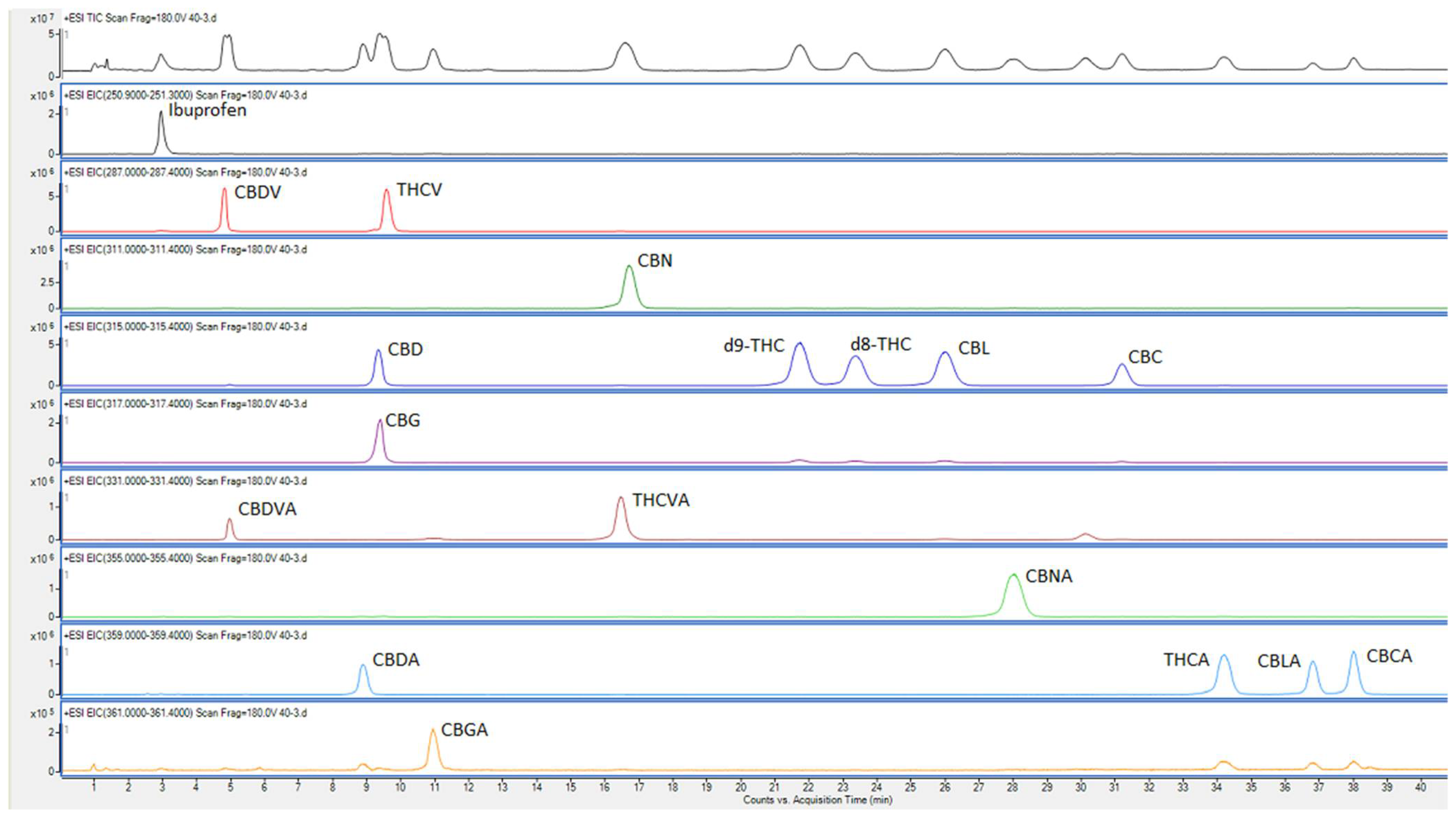Difference between revisions of "Template:Article of the month"
Shawndouglas (talk | contribs) (Updated article of the month text.) |
Shawndouglas (talk | contribs) (Updated article of the month text.) |
||
| Line 1: | Line 1: | ||
<div style="float: left; margin: 0.5em 0.9em 0.4em 0em;">[[File: | <div style="float: left; margin: 0.5em 0.9em 0.4em 0em;">[[File:Fig1 Hewavitharana Separations 9-4.png|240px]]</div> | ||
'''"[[Journal: | '''"[[Journal:Simultaneous quantification of 17 cannabinoids in cannabis inflorescence by liquid chromatography–mass spectrometry|Simultaneous quantification of 17 cannabinoids in cannabis inflorescence by liquid chromatography–mass spectrometry]]"''' | ||
With an increasing appreciation for the unique pharmacological properties associated with distinct, individual [[cannabinoid]]s of ''[[Cannabis sativa]]'', there is demand for accurate and reliable quantification for a growing number of them. Although recent methods are based on highly selective [[chromatography]]–[[mass spectrometry]] technology, most are limited to a few cannabinoids, while relying on unnecessarily sophisticated and expensive [[High-performance liquid chromatography|ultra-high-performance liquid chromatography]] and [[tandem mass spectrometry]]. Here we report an optimized, simple extraction method followed by a reliable and simple high-performance liquid chromatography (HPLC) method for separation. The detection is performed using a [[Time-of-flight mass spectrometry|time-of-flight mass spectrometer]] that is available in most natural products research laboratories. Due to the simplicity of instrumentation .... ('''[[Journal:Simultaneous quantification of 17 cannabinoids in cannabis inflorescence by liquid chromatography–mass spectrometry|Full article...]]''')<br /> | |||
<br /> | <br /> | ||
''Recently featured'': | ''Recently featured'': | ||
: ▪ [[Journal:Cannabis sativa research trends, challenges, and new-age perspectives|Cannabis sativa research trends, challenges, and new-age perspectives]] | : ▪ [[Journal:Potential of NIRS technology for the determination of cannabinoid content in industrial hemp (Cannabis sativa L.)|Potential of NIRS technology for the determination of cannabinoid content in industrial hemp (''Cannabis sativa'' L.)]] | ||
: ▪ [[Journal:Cannabis sativa research trends, challenges, and new-age perspectives|''Cannabis sativa'' research trends, challenges, and new-age perspectives]] | |||
: ▪ [[Journal:Does cannabis extract obtained from cannabis flowers with maximum allowed residual level of aflatoxins and ochratoxin A have an impact on human safety and health?|Does cannabis extract obtained from cannabis flowers with maximum allowed residual level of aflatoxins and ochratoxin A have an impact on human safety and health?]] | : ▪ [[Journal:Does cannabis extract obtained from cannabis flowers with maximum allowed residual level of aflatoxins and ochratoxin A have an impact on human safety and health?|Does cannabis extract obtained from cannabis flowers with maximum allowed residual level of aflatoxins and ochratoxin A have an impact on human safety and health?]] | ||
Revision as of 18:53, 28 June 2022
With an increasing appreciation for the unique pharmacological properties associated with distinct, individual cannabinoids of Cannabis sativa, there is demand for accurate and reliable quantification for a growing number of them. Although recent methods are based on highly selective chromatography–mass spectrometry technology, most are limited to a few cannabinoids, while relying on unnecessarily sophisticated and expensive ultra-high-performance liquid chromatography and tandem mass spectrometry. Here we report an optimized, simple extraction method followed by a reliable and simple high-performance liquid chromatography (HPLC) method for separation. The detection is performed using a time-of-flight mass spectrometer that is available in most natural products research laboratories. Due to the simplicity of instrumentation .... (Full article...)
Recently featured:
- ▪ Potential of NIRS technology for the determination of cannabinoid content in industrial hemp (Cannabis sativa L.)
- ▪ Cannabis sativa research trends, challenges, and new-age perspectives
- ▪ Does cannabis extract obtained from cannabis flowers with maximum allowed residual level of aflatoxins and ochratoxin A have an impact on human safety and health?
